Winter Safety
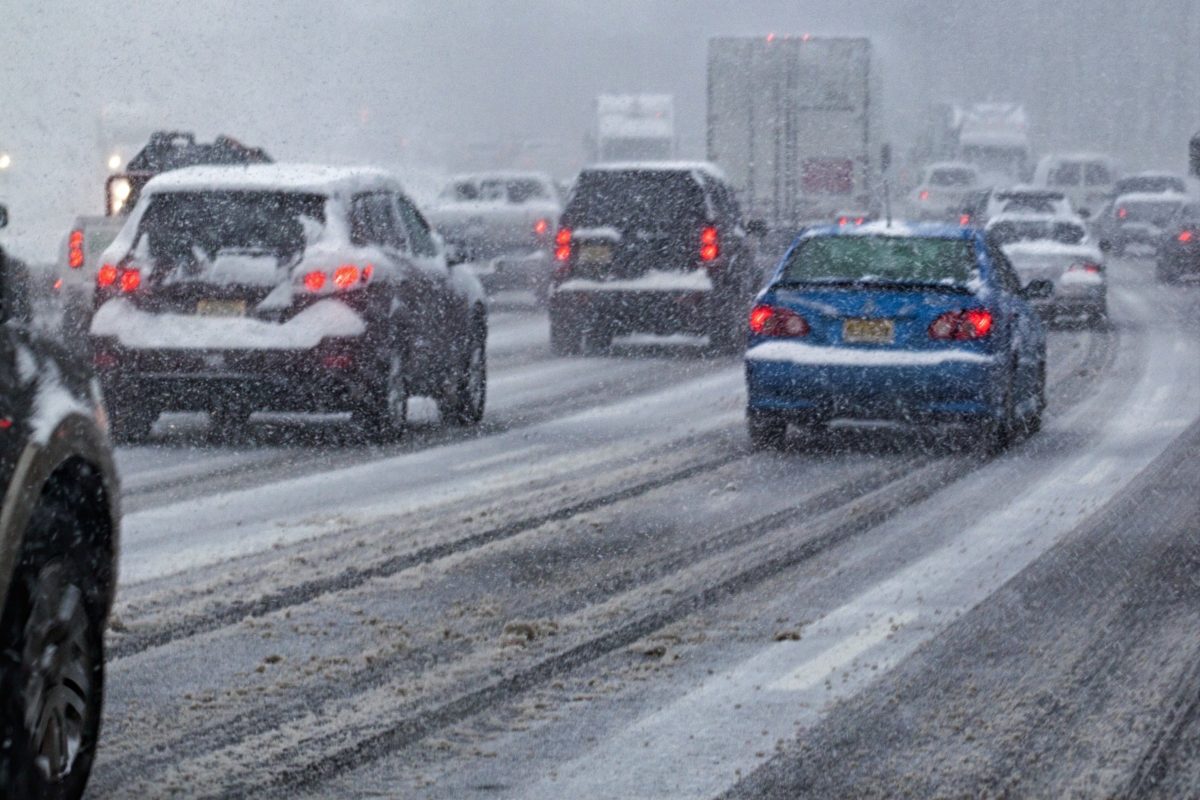
In addition to cold stress, there are other winter weather-related hazards that workers may be exposed to when performing tasks such as driving in the snow, removing snow from rooftops, and working near downed or damaged power lines.
Winter Driving
Although employers cannot control roadway conditions, they can promote safe driving behavior by ensuring workers: recognize the hazards of winter weather driving, for example, driving on snow/ice-covered roads; are properly trained for driving in winter weather conditions, and are licensed (as applicable) for the vehicles they operate.
Employers should set and enforce driver safety policies. Employers should also implement an effective maintenance program for all vehicles and mechanized equipment that workers are required to operate. Crashes can be avoided.
Employers should ensure properly trained workers’ inspect the following vehicle systems to determine if they are working properly:
- Brakes: Brakes should provide even and balanced braking. Also check that brake fluid is at the proper level.
- Cooling System: Ensure a proper mixture of 50/50 antifreeze and water in the cooling system at the proper level.
- Electrical System: Check the ignition system and make sure that the battery is fully charged and that the connections are clean. Check that the alternator belt is in good condition with proper tension.
- Engine: Inspect all engine systems.
- Exhaust System: Check exhaust for leaks and that all clamps and hangers are snug.
- Tires: Check for proper tread depth and no signs of damage or uneven wear. Check for proper tire inflation.
- Oil: Check that oil is at the proper level.
- Visibility Systems: Inspect all exterior lights, defrosters (windshield and rear window), and wipers. Install winter windshield wipers.
An emergency kit with the following items is recommended in vehicles:
- Cellphone or two-way radio
- Windshield ice scraper
- Snowbrush
- Flashlight with extra batteries
- Shovel
- Tow chain
- Traction aids (bag of sand or cat litter)
- Emergency flares
- Jumper cables
- Snacks
- Water
- Road maps
- Blankets, change of clothes
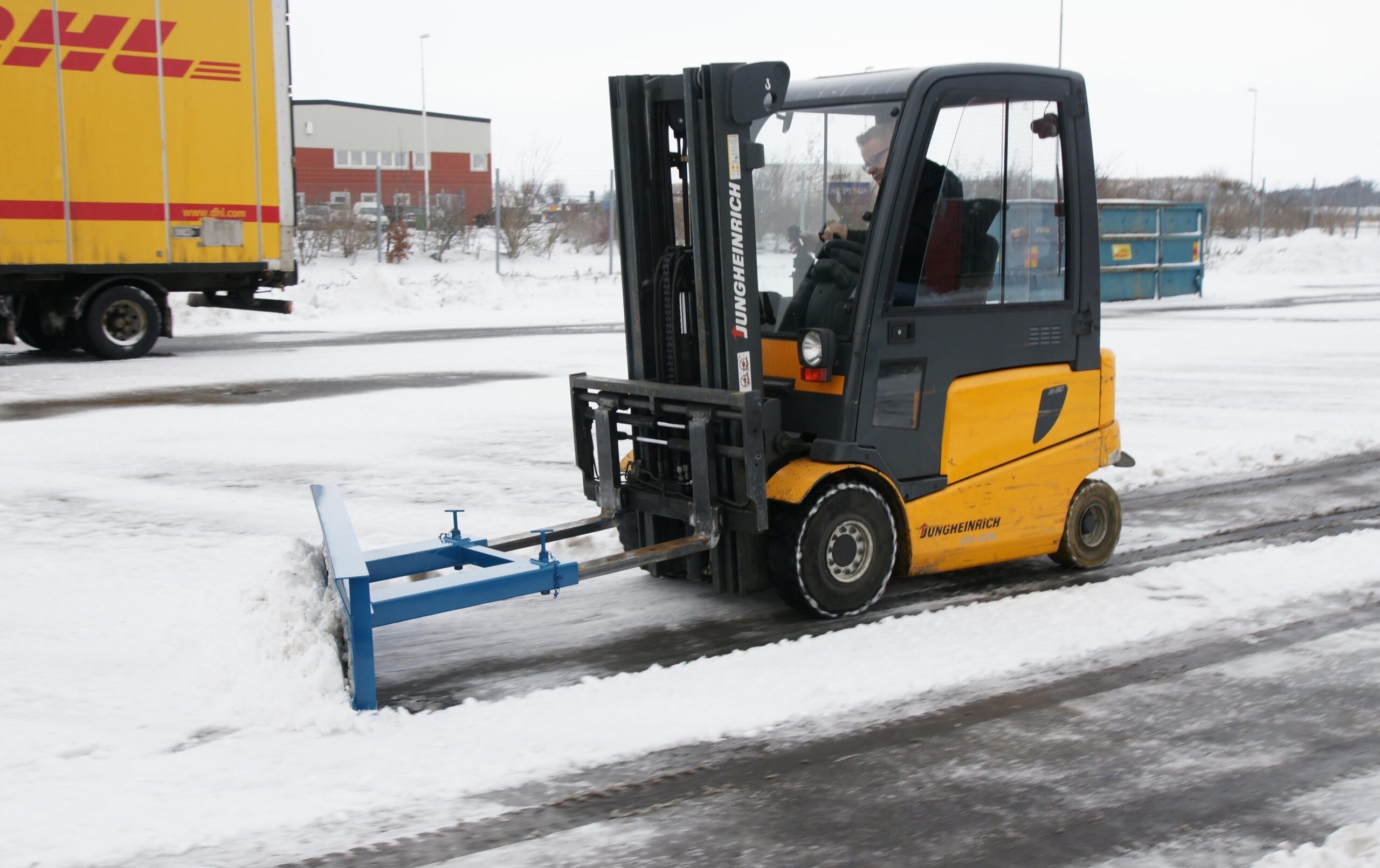
Workarea Traffic Safety
Workers being struck by vehicles or mobile equipment lead to many work zone fatalities or injuries annually. Drivers may skid or lose control of their vehicles more easily when driving on snow and/or ice-covered roads. It is, therefore, important to properly set up work zones with the traffic controls identified by signs, cones, barrels, and barriers, to protect workers. Workers exposed to vehicular traffic should wear the appropriate high visibility vest at all times so that they can be visible to motorists.
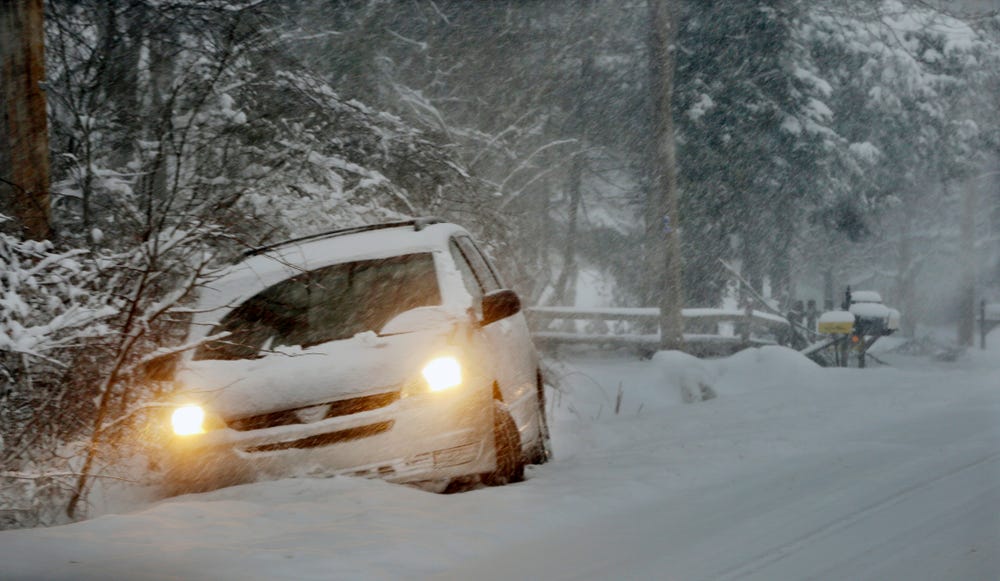
Stranded in a Vehicle
If you are stranded in a vehicle, stay in the vehicle. Call for emergency assistance if needed, response time may be slow in severe winter weather conditions. Notify your supervisor of your situation. Do not leave the vehicle to search for assistance unless help is visible within 100 yards. You may become disoriented and get lost in blowing and drifting snow. Display a troubling sign by hanging a brightly colored cloth on the vehicle’s radio antenna and raising the hood. Turn on the vehicle’s engine for about 10 minutes each hour and run the heat to keep warm. Also, turn on the vehicle’s dome light when the vehicle is running as an additional signal. Beware of carbon monoxide poisoning. Keep the exhaust pipe clear of snow, and open a downwind window slightly for ventilation.
Watch for signs of frostbite and hypothermia. Do minor exercises to maintain good blood circulation in your body. Clap hands and move arms and legs occasionally. Try not to stay in one position for too long. Stay awake, you will be less vulnerable to cold-related health problems. Use blankets, newspapers, maps, and even the removable car mats for added insulation. Avoid overexertion since cold weather puts an added strain on the heart. Unaccustomed exercise such as shoveling snow or pushing a vehicle can bring on a heart attack or make other medical conditions worse.
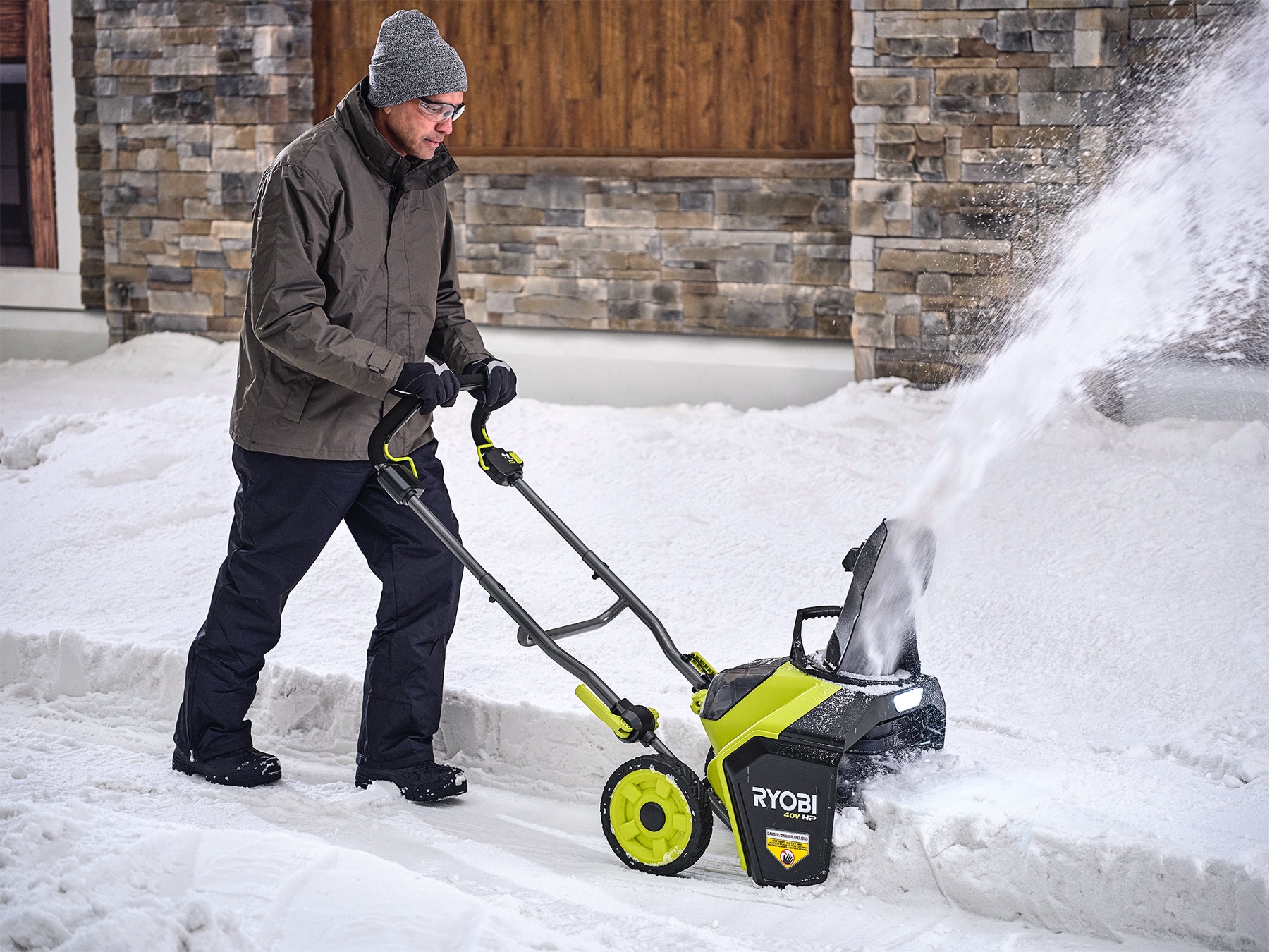
Using Powered Equipment like Snow Blowers
It is important to make sure that powered equipment, such as snow blowers are properly grounded to protect workers from electric shocks or electrocutions. When performing maintenance or cleaning, make sure the equipment is properly guarded and is disconnected from power sources.
Snowblowers commonly cause lacerations or amputations when operators attempt to clear jams with the equipment turned on. Never attempt to clear a jam by hand. First, turn the snow blower off and wait for all moving parts to stop, and then use a long stick to clear wet snow or debris from the machine. Keep your hands and feet away from moving parts. Refuel a snow blower prior to starting the machine; do not add fuel when the equipment is running or when the engine is hot.
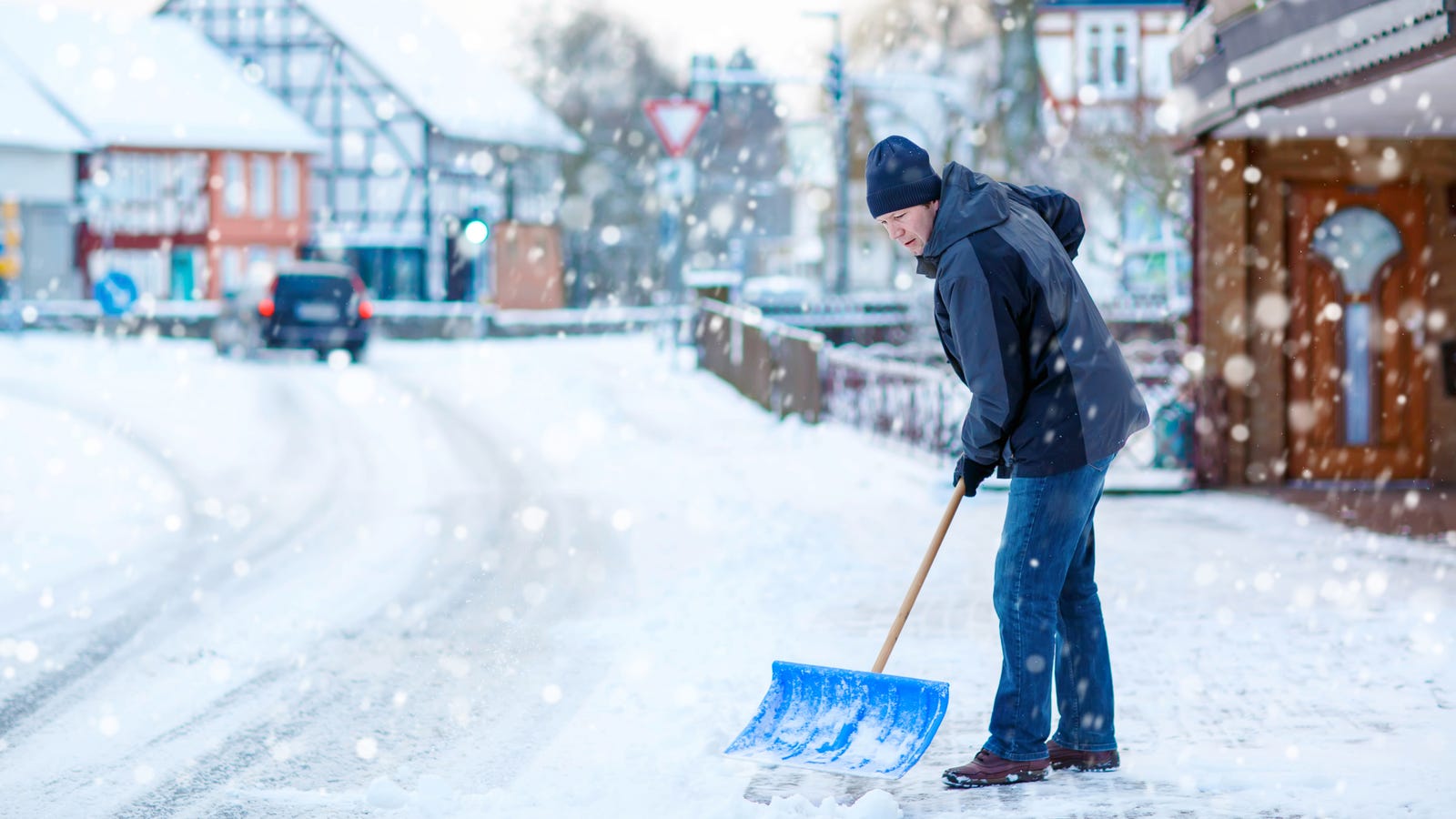
Shoveling Snow
Shoveling snow can be a strenuous activity, particularly because cold weather can be tasking on the body. There is a potential for exhaustion, dehydration, back injuries, or heart attacks. During snow removal in addition to following the tips for avoiding cold stress, such as taking frequent breaks in warm areas, there are other precautions workers can take to avoid injuries. Workers should warm-up before the activity, scoop small amounts of snow at a time and where possible, push the snow instead of lifting it. The use of proper lifting technique is necessary to avoid back and other injuries when shoveling snow: keep the back straight, lift with the legs and do not turn or twist the body.
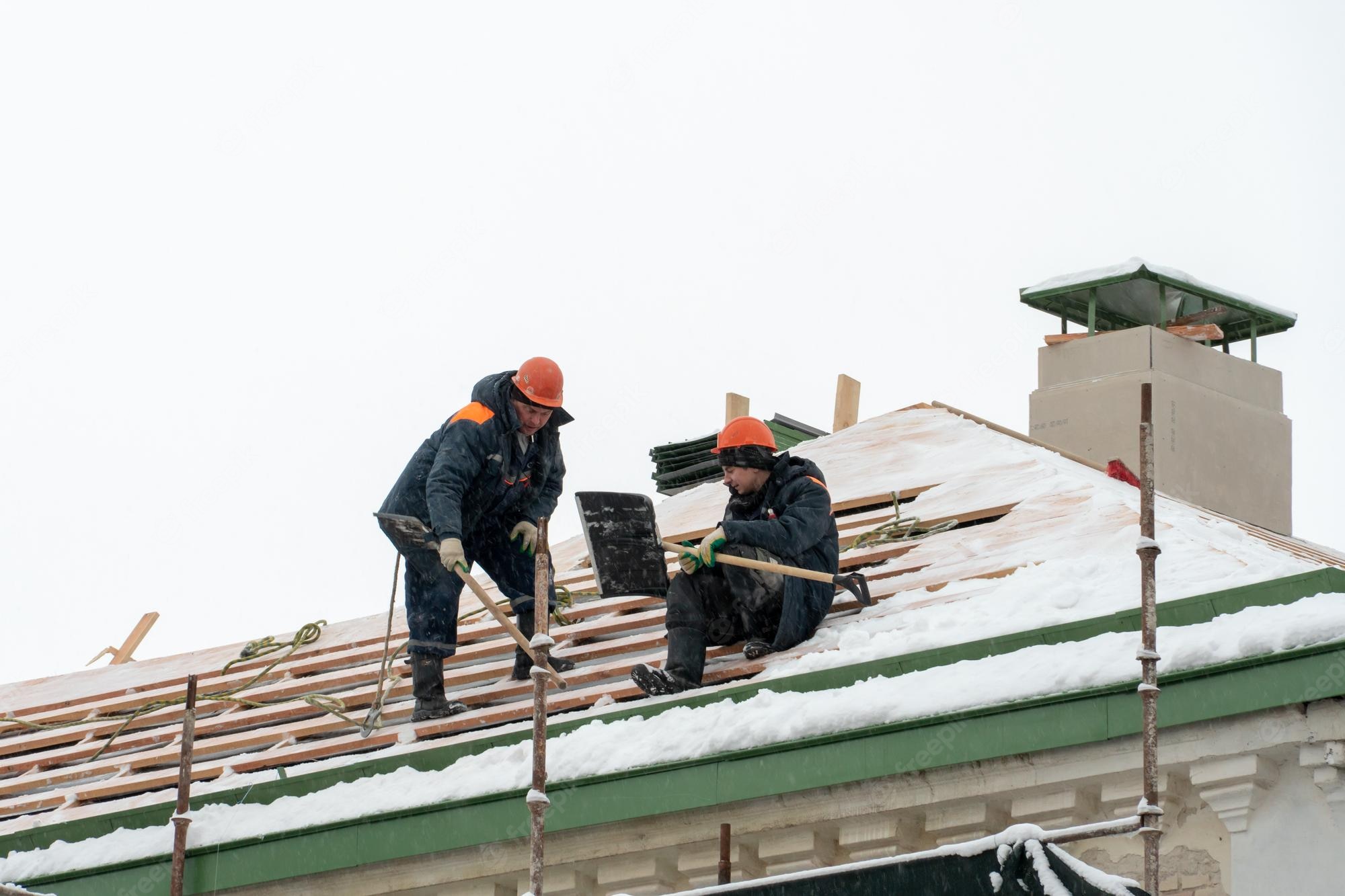
Clearing Snow from Roofs and Working at Heights
Employers must evaluate snow removal tasks for hazards and plan how to do the work safely. Workers should be aware of the potential for unexpected hazards due to the weather conditions, for example, layers of ice can form as the environmental temperature drops, making surfaces even more slippery. A surface that is weighed down by snow must be inspected by a competent person to determine if it is structurally safe for workers to access it, because it may be at risk of collapsing. Snow-covered rooftops can hide hazards such as skylights that workers can fall through. Electrical hazards may also exist from overhead power lines or snow removal equipment.
Employers can protect workers from these hazardous work conditions, for example, by using snow removal methods that do not involve workers going on roofs, when and where possible. Employers should determine the right type of equipment (ladders, aerial lifts, etc.) and personal protective equipment (personal fall arrest systems, non-slip safety boots, etc.) for the job and ensure that workers are trained on how to properly use them.

Preventing Slips on Snow and Ice
To prevent slips, trips, and falls, employers should clear walking surfaces of snow and ice, and spread deicer, as quickly as possible after a winter storm. In addition, the following precautions will help reduce the likelihood of injuries:
Wear proper footwear when walking on snow or ice is unavoidable because it is especially treacherous. A pair of insulated and water-resistant boots with good rubber treads is a must for walking during or after a winter storm. Keeping a pair of rubber overshoes with good treads that fit over your street shoes is a good idea during the winter months.
Take short steps and walk at a slower pace so you can react quickly to a change in traction when walking on an icy or snow-covered walkway.
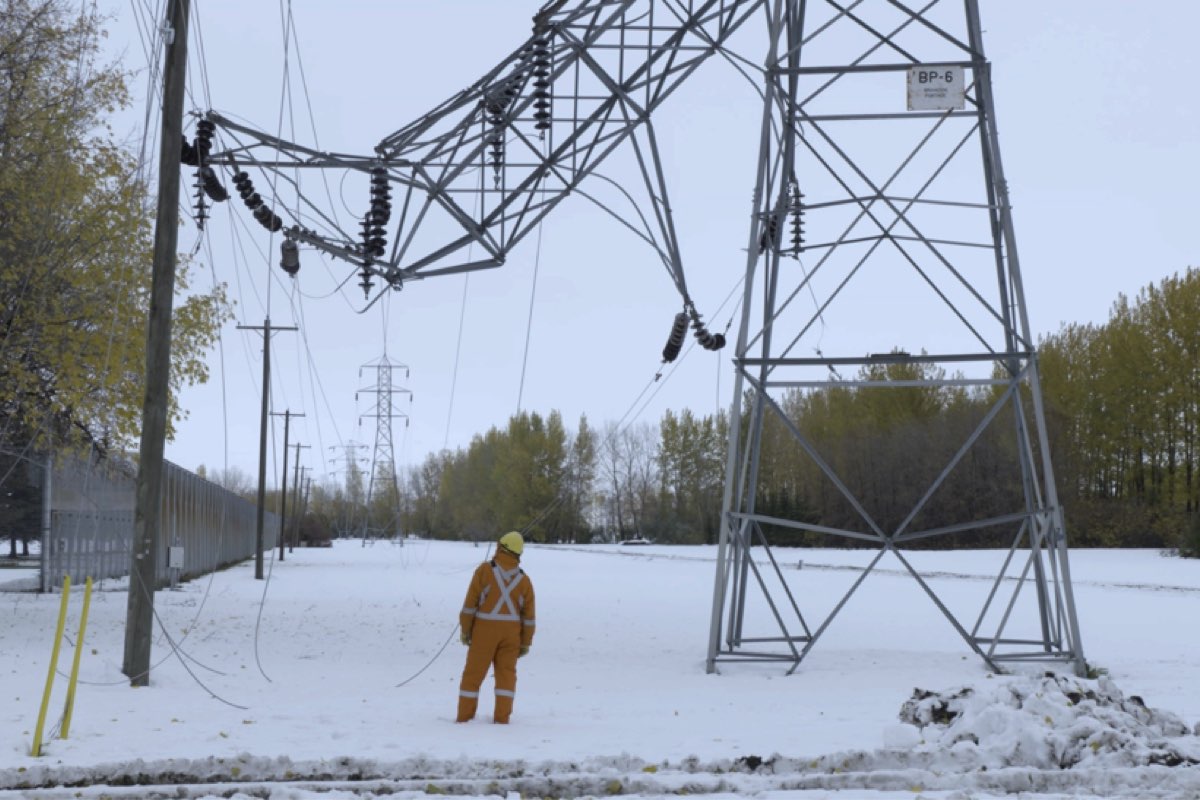
Repairing Downed or Damaged Power Lines
Repairing and/or replacing damaged power lines in severe winter weather conditions are especially hazardous. A major hazard is a snow, because the moisture can reduce the insulation value of protective equipment, and could cause electrocution. In these conditions, de-energized work is safer, but if energized work must be done, qualified workers and supervisors must first do a hazard analysis that includes evaluating the weather conditions and identifying how to safely do the job.
Other potential hazards include:
- Electrocution by contacting downed energized power lines, or contacting objects, such as broken tree limbs, in contact with downed energized power lines.
- Fires caused by an energized line or equipment failure.
- Being struck or crushed by falling tree limbs, collapsing poles, etc.
When working on downed or damaged power lines, electrical utility workers should use safe work practices, appropriate tools, and equipment (including personal protective equipment (PPE)). Extra caution should be exercised when working in adverse weather conditions.
Working Near Downed or Damaged power lines
Assume all power lines are energized and stay clear of any downed or damaged power lines. Establish a safe distance from power lines and report any incidents to the responsible authority. Only properly-trained electrical utility workers can handle damaged power lines.

Removing Downed Trees
Clearing downed trees is a critical job during severe winter weather conditions. It is usually urgent to remove downed trees that block public roads and damage power lines. Emergency crews are often tasked with clearing downed trees.
Potential hazards include:
- Electrocution by contacting downed energized power lines or contacting broken tree limbs in contact with downed energized power lines.
- Falls from heights.
- Being injured by equipment such as chain saws and chippers.
Workers should wear PPE that protects them from the hazards of tree removal tasks. Workers using chainsaws and chippers to clear downed trees should use gloves, chaps, foot protection, eye protection, fall protection, hearing protection, and head protection.
Only powered equipment designed for outdoor and wet conditions should be used. Use all equipment and tools (saws, chippers, etc.) properly and for the purpose that they are designed for. Ensure that equipment is always maintained in serviceable condition and inspected before use by a knowledgeable person that can identify any problems with the equipment. Do not use equipment that is not functioning properly. Equipment must have proper guarding (as applicable); safeguards must never be bypassed. All controls and safety features must function as designed by the manufacturer.
Source: OSHA
You can be interested in quite an informative article about “Winter Road Safety in UK“

